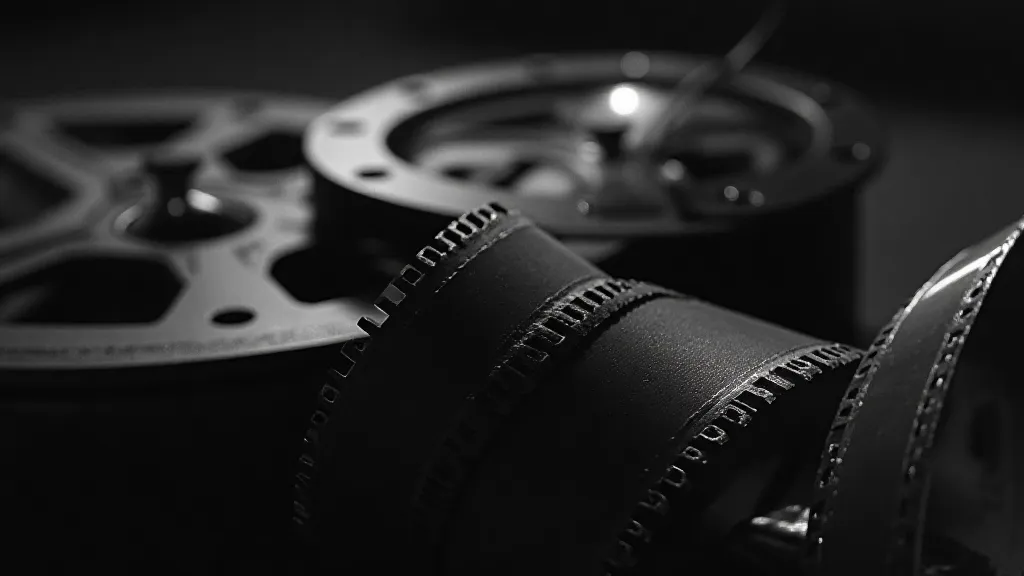The Submerged Symphony: When Silence Speaks Louder Than a Film Score
We celebrate the soaring strings, the thunderous percussion, the iconic themes that define so many films. The power of film music is undeniable; it can elevate a scene, foreshadow danger, and encapsulate the entire emotional arc of a narrative. But what happens when that power is deliberately, almost surgically, withdrawn? When the score fades to nothing, leaving the audience suspended in an unsettling, profound quiet? This isn't a failing of the composer, or a budget constraint, but a conscious artistic choice – a submerged symphony where the absence of sound speaks volumes.
The Quiet Language of Absence
The history of film scores is relatively young. Early cinema was often silent, with intertitles conveying dialogue and narrative. Even with the advent of synchronized sound, music wasn’t consistently used. Initially, live musicians accompanied films, improvising scores tailored to the immediate viewing experience. As studio-produced soundtracks became standardized, the pervasive nature of film music took hold, almost to the point of expectation. The deliberate negation of this expectation – the strategic silence – can be a potent tool.
Think of it this way: we’re conditioned to hear music shaping our emotional response. When that scaffolding vanishes, we’re suddenly exposed, raw, to the unmediated reality of the image and the performance. The silence isn’t merely an absence of sound; it’s an active force, a spotlight illuminating the vulnerability of the characters and the gravity of the situation. It demands that the viewer engage more deeply, to interpret the scene solely through visual cues and acting choices.
Consider, for example, the opening scenes of Andrei Tarkovsky's Solaris (1972). The stark beauty of the planetary landscape unfolds in almost complete silence. There’s no swelling orchestral theme to evoke awe or wonder. Instead, we've only the hum of machinery, the creaks of the space station, and, crucially, the sounds of the protagonist's footsteps. This absence doesn’t diminish the film’s impact; it amplifies it. It fosters a sense of isolation, existential dread, and the unsettling vastness of the unknown.

The Craftsmanship of Quiet: Restoration and Resilience
This approach to sound design mirrors, in a strange way, the meticulous work of antique instrument restoration. I once spent time with a craftsman specializing in accordions – beautiful, complex machines that demand an almost obsessive level of care. He explained that sometimes, the best restoration isn’t about adding more; it’s about subtracting. Removing layers of accumulated dirt, poorly applied repairs, and dissonant modifications to reveal the original instrument’s voice. An accordion choked with grime can’t breathe, can't truly resonate. Similarly, a film score can sometimes smother a scene, obscuring the nuances of performance and visual storytelling.
These artisans possess an innate understanding of how things are meant to *be*, and their work involves not just technical skill, but a deep sensitivity to the instrument's history. They might carefully address a cracked reed, replace a deteriorated bellows, or gently clean and re-align the keys, all with the goal of allowing the accordion to function as it was originally intended – a voice for the musician, a conduit for emotion.
The same principle applies to film. The absence of music isn’t a shortcut; it's a considered artistic decision that requires a deep understanding of the narrative’s emotional landscape. It's a testament to the director's trust in the actors, the cinematographer, and the power of the visual language itself.
Moments of Submerged Symphony
Beyond Solaris, several other films masterfully employ this technique. In Stanley Kubrick’s The Shining, the deliberate lack of a traditional score during many of the film’s most terrifying sequences contributes significantly to the mounting sense of dread. The silence, punctuated only by the unsettling sounds of the Overlook Hotel – the creaking floorboards, the dripping water, Jack Torrance's heavy breathing – becomes a character in itself. The absence of music allows the viewer's imagination to fill the void, creating a personalized horror experience that’s far more disturbing than any pre-packaged musical cue could ever achieve.
Similarly, the later films of Béla Tarr – particularly The Turin Horse (2011) – operate almost entirely within a realm of minimal sound. The wind, the rain, the creaks of the farmhouse, the labored breaths of the characters – these become the dominant sonic elements, creating a relentlessly bleak and powerfully resonant portrait of human endurance and despair. The absence of a traditional soundtrack doesn't feel like a limitation; it's the film's defining characteristic, reinforcing its themes of isolation, decay, and the inescapable weight of existence.

More Than Just Absence: The Power of Minimal Music
It’s important to note that this isn’t always a complete absence of sound. Often, directors utilize *minimal* music – sparse, repetitive motifs that underscore the emotional weight of a scene without overpowering it. These scores, often composed using unconventional instrumentation or experimental techniques, can be incredibly effective in creating a sense of unease or amplifying the psychological tension. The work of Jóhann Jóhannsson, for example, in films like Sicario and Arrival, exemplifies this approach. His music isn’t a constant presence; it emerges and recedes, creating a haunting and deeply resonant atmosphere.
This deliberate restraint – this conscious decision to limit the sonic palette – reveals a profound respect for the medium of film. It acknowledges that the most powerful moments aren’t always the loudest; sometimes, the most profound emotional impact comes from the quiet spaces, the moments of stillness, the absence of sound. It is a subtle art, requiring not just technical expertise, but a deep understanding of the human heart and the power of silence.

Appreciating the Unheard Score
Next time you’re watching a film, pay attention to the moments of silence. Don’t assume that the absence of music is a mistake or a shortcoming. Consider it, instead, as a deliberate artistic choice – a submerged symphony where the absence of sound speaks volumes. Appreciate the craftsmanship, the restraint, the trust in the visual language. Listen, not just to what’s heard, but to what isn’t. You might be surprised by what you discover.





